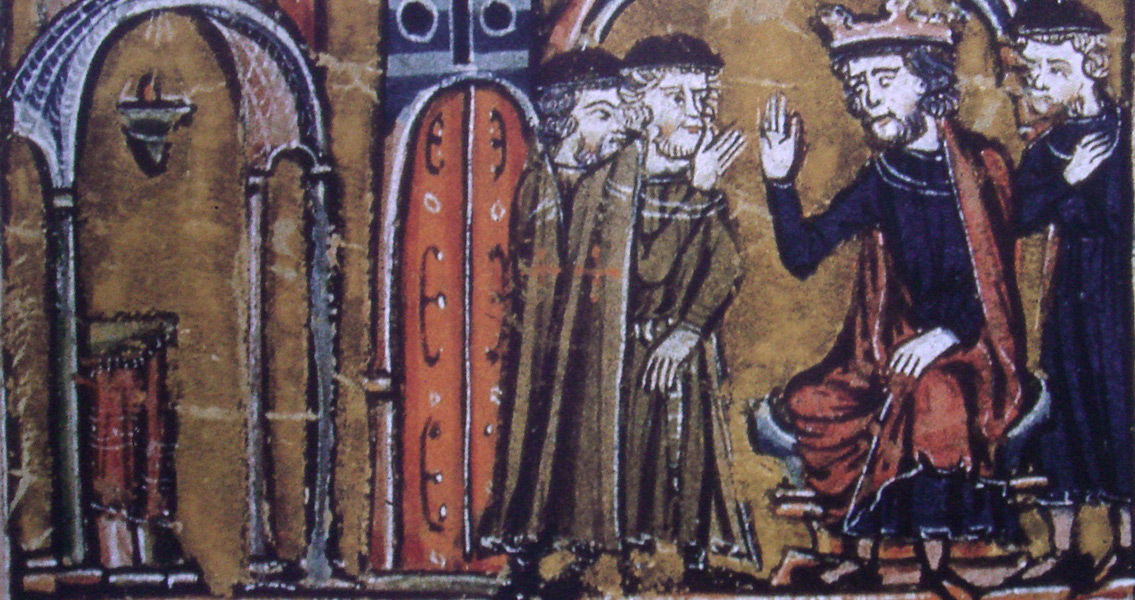<![CDATA[On the 13th January 1128, Pope Honorius declared the Knights Templar to be an army of God, providing official papal sanction to the military order. Works of fiction, speculative history and conspiracy theories about the Order have since generated a cloud of intrigue and mystery, with modern myths defining the Knights Templar as much as historical reality. The Order was founded in 1118, in the aftermath of the First Crusade (1095-99). Following the success a number of 'Crusader States' were established in the Middle East, centred around Jerusalem, and pilgrims from Western Europe began to venture into the Holy Land. A weakened military presence in the region however, meant that the hold on these newly captured territories was precarious, and Christian pilgrims were frequently attacked by Muslim raiders. A group of French Knights, led by Hugues de Payns, vowed to protect Christian pilgrims, and created a religious community towards that end. The king of Jerusalem, Baldwin II, gave the Knights quarters in the the Temple of Solomon. For the first few years the Knights Templar consisted of only nine French knights (and their entourages), restricting them purely to escorting pilgrims. From such humble beginnings however, they grew into something far more significant and powerful, in both Europe and the Holy Land. The organisation and regulation of the order was based on the Benedictine Rule, and in particular the interpretation adopted by Cistercians. The white robe with a red cross, the insignia of the Order, was based on the white robes of Cistercian monks. The Knights had to swear a vow of poverty, chastity and obedience, and renounce the world. They took on lives reminiscent of monks, although they did not devote themselves to the study of scripture, and were not constrained to a single monastery. Individual knights were prohibited from owning property, but the Order itself was not, something which would come to be a cause of great controversy. In 1127 de Payns started a tour of Europe, with the aim of recruiting more knights and securing donations. The tour was successful, with the nobles of Europe making substantial donations of land and money, and scores of new knights being recruited. The increase in numbers and resources saw the Knights take on greater importance in the Holy Land. Assuming responsibility for the protection of the Christian states located there, they invested in the construction of castles and fortifications, as well as fighting against Muslim armies. It has been estimated that some 20,000 soldiers of the Knights Templar lost their lives during the Crusades. The fall of Acre, the last Crusader stronghold, in 1291, signaled the failure of the Crusades, and the role of the Knights Templar came into question. By this point they had become hugely significant in European politics and economics. The Order owned large swathes of land across Western Europe, as well as in the Holy Land. Their network of property and military strength meant they were often employed as bankers, used to transport money from Western Europe to the Holy Land, and back. They had become far more than a military order, and there is evidence to suggest that many secular leaders, including royalty, found themselves in debt to the Knights Templar. A combination of the mystery surrounding the Templars, their growing secular power and the failure of the Crusades, ultimately brought about their end. The initiation rituals of the Order were shrouded in secrecy, as was much of the knight's day to day practice. In 1307 the Order's grand master Jacques de Molay was arrested at the behest of King Philip VI of France and Pope Clement V. The Order was accused of practicing heresy, sacrilege, Satanism and homosexuality. Under torture de Molay and other leading Templars confessed to the charges, and were burned at the stake in Paris. It seems the charges were a calculated move, such accusations led to popular mistrust of the Templars, and the secrecy surrounding the Order gave the charges an air of credibility. It should be noted however, that it has since been proved that the charges were fabricated. In 1312 Clement officially dissolved the Order, awarding their assets to a rival order, the Knights Hospitalers. Since its destruction, the fascination with the Knights Templar has expanded, sometimes with tragic effect. Whether considered as a secret force for good or evil, it seems they continue to linger in the world's consciousness, and continue to be associated with secrecy. The Templars are often linked with the legend of the Holy Grail or with conspiracies involving the Catholic Church. In the eighteenth century they were accused of starting the French Revolution, and linked to the Freemasons. More recently, novels such as the 'da Vinci Code' have tied them in with international clandestine activity, while an American historian has rather sensationally argued that the Templars in fact fled to North America, settling there a century before Columbus discovered the New World. Most disturbingly, the Norwegian terrorist Anders Brevik made heavy reference to them in his manifesto, claiming to have reformed the order. As mentioned above, the Knights Templar were ultimately dissolved as a consequence of their growing power, and the secrecy that surrounded them. It seems that these same factors have facilitated the development of the legends, myths and conspiracy theories that surround the Order. The story of the Knights Templar tells us a great deal about Europe during the time of the crusades. The story of how we remember them can tell us a great deal about the world in the seven centuries since their dissolution. ]]>
The Knights Templar Declared an Army of God
